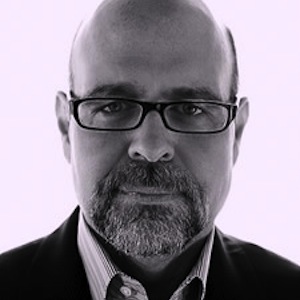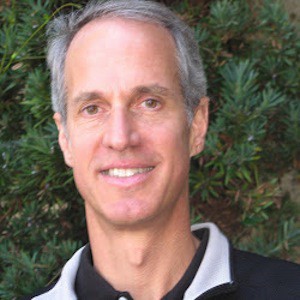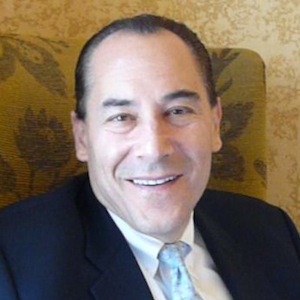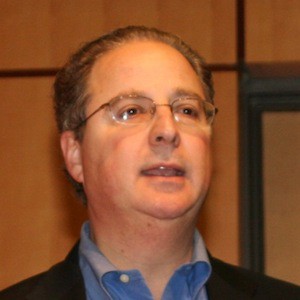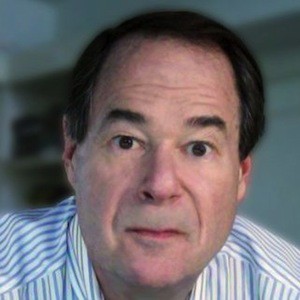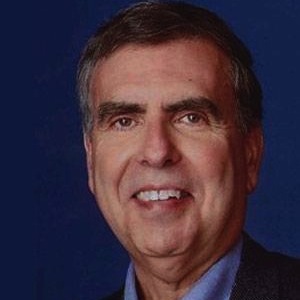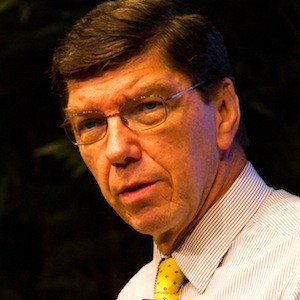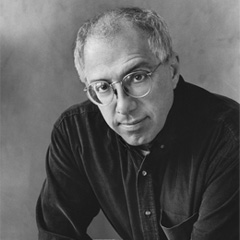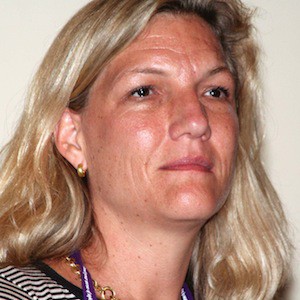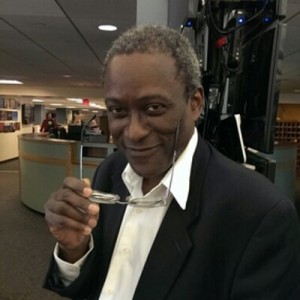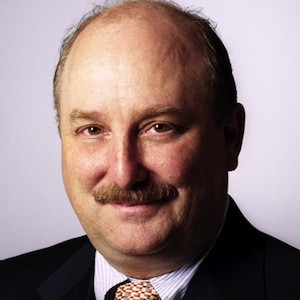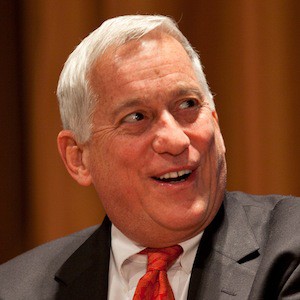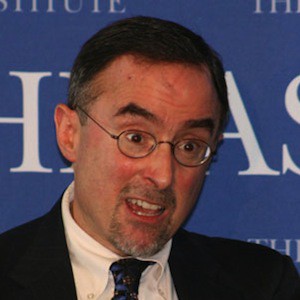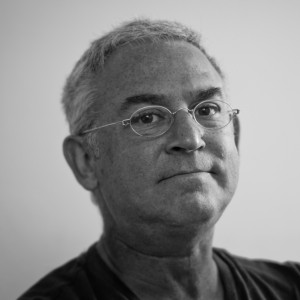Paul Sagan: Good afternoon. It is March 27, 2013. It’s Paul Sagan and Martin Nisenholtz, and we are on the line today with Scott Woelfel from Atlanta. Scott was head of CNN Interactive and really created cnn.com with an early band many years ago. We’re here to get his thoughts and impressions on that, and other things related to when digital technology ran into the news business. Scott, maybe we go way back in the memory banks and start with your earliest memory of when you saw either the beginning of disruption, or capability of digital technology in news, or even earlier, if that was your first online experience and relevant to the narrative.
Scott Woelfel: That sounds good. Thank you for including me in this. I need some digital implants in my head, I think, to remember back that far, but actually it doesn’t seem that long ago, when you consider it’s more than 20 years, in some cases. I had worked at CNN for a good 10 years before we started at cnn.com, but even before that, my first with digital technology was when someone fresh came to visit CNN from Apple, and this was in 1991, end of 1990, beginning of 1991. QuickTime had just come out, and they were looking to do a news magazine on [inaudible 01:33] to challenge “Time” and “Newsweek” and approached [inaudible 0:37] about it.
I got by total chance, literally walking down the hall, when [inaudible 01:45] , “What do you do for this guy?” [inaudible 01:47] this was my and really CNN’s first exposure to digital technology when it comes to interpreting news in some way. We put together a prototype of a disk, which is very hard to wide shot, because it’s on Director, which is very hard to figure out how to play on a modern machine.
It turned out great. It took maybe about two months to do it with some resources that Apple gave us. Internally…
Martin Nisenholtz: Scott, can I break in for a second? You’re breaking up on my machine. Paul, is he breaking up on yours?
Paul: There’s a little pixelation, but it’s pretty OK.
Martin: The audio is fine?
Paul: I can hear Scott. I lost a couple of words, when he was just getting started.
Martin: Then it’s just me, thanks, I’m sorry to interrupt.
Paul: Martin, you might want to…mute our mics, in case that interrupts, not on your laptop but on the Google interface, and we’ll just unmute when we need to speak. That might help not interrupt Scott. Scott, sorry, you should pick up.
Scott: Sure, eventually prototype for the CD ROM, I went to management at CNN, and they looked at it, and said, “This is interesting, but it’s really not our business. Thanks for the disk, go back to your day job.” My day job in that case, I was the Executive Producer for the prime time newscast. Again, this is Spring of 1991, at this point, it really got me interested in what the digital technology could do to expand the audience at CNN.
I worked with a couple other people internally. To look at [inaudible 03:24] the online services, CompuServe being the primary online service, at that time. We struck out at the forums there, where we would have people talk about the news, typically, and also bring in some guests from time to time.
CompuServe, they would have these forums where you would come in and there would be a guest and a relatively small number of questions to the guest that the whole room would see. We ran one of those. General comments on the news, and the side, we did actually [inaudible 03:58] Steve Brahms as a business.
We did three disks, a year review in ’93, actually, we did both years ’93 and ’94. We did something called [inaudible 04:10] a book, Britannica approach to some long standing conflicts around the world, all the encyclopedic information video heavy.
We did one that I’m embarrassed to admit, which was the trial of OJ Simpson. Everything you needed to know primer before the trial started.
Through the course of all this, of course, the Web started to emerge. I remember looking at and downloading my first Mosaic Web browser, in late ’93. Yes, that’s about right. Playing around with it thinking, “There’s got to be some implications for this.”
But it really wasn’t until a year later, because we were all doing our regular TV jobs. At the same time, this small group of people that I had assembled, that were really starting to get serious thinking about it. That was when I started to talk with Harry Motro and Mark Bernstein, both of whom had business experience. I did not have any business experience, just journalism.
The three of us put together the business plan for what would become CNN Interactive and got that [inaudible 05:11] under the sports division of CNN in January of ’95.
Martin: Talk again about that process of getting it started as a, what we all called a new media or new media division, in what implied was these were old media companies. This was a cable television network company taking a step into a new space. Can you would talk about easy or hard to get funded, in your heart, or did the structure happen in the newsroom of CNN or did you set it up separately, and was that important or unimportant or seemingly important or unimportant at the time?
Scott: I’ll start with the convention which was surprisingly easy, I think, because what we were doing was so unknown to the television [inaudible 06:01] . It wasn’t seen as a threat to anything else. We put together the plan, went to, Harry Motro was actually the one who did it, but went to Ted Turner and did eventually get referred to Ted who is still not that digital today, understood there was some potential here, referred him to Jon Petrovich who was running “Headline News” at the time, and we basically were funded out and we actually operated under him at the beginning of CNN Interactive. Harry really handled a lot of the funding part. My job was obviously just to put together the team and make a product out of it. CNN at that time was completely a broadcast television and radio network, had a hub and spoke system where there was a central news gathering hub that would bring in all the material, and then each network, whether it was CNN Domestic, CNN International, CNN Spanish, CNN Radio, whatever it happened to be, would take the material and use it from that news gathering hub and customize it for its audience and it’s platform.
I said the easiest way to bolt on this interactive thing in this would be just another spoke on that wheel. I created the system to tap into that news gathering hub and get our material that way just like everyone else was.
What we did a little differently was, because we were filling a digital print medium, we needed a lot more material than what we were getting out of something that was created for television primarily. We did deals with the wire services to get the ability to use their, copy some of it, 100 percent under the copyright, with no rewriting, and then of course having the ability to rewrite it, and couple that to bring in a lot of the early staff of writers and editors had a wire service background because, again it was a very different animal than what we had done with television.
We needed them to be able to process all this material into something quickly. They were used to a quick deadline a wire service has as opposed to newspaper reporters who are used to a much longer deadline. We did hire a few newspaper people, editors and reporters as well. The wire service really drove that idea of constant updates, which, of course, is what [inaudible 08:19] CNN television had worked up to that.
Martin: I just want to break in here, because this is a crucial point you’ve just made about the journalistic side of this. You’re a television network. This is a narrow band environment. You recognize that video is not workable, you have to create something entirely new, and it seems to me you guys got to pretty much write from the beginning, in terms of people wanting the most current news. It seems to me also, that the wires facilitated that at some level. Was it all of the wires, was it “Reuters,” “AP,” “Agence France Presse,” was it all of them or just Reuters at that point?
Scott: All. CNN had arrangements with all of the big four, so Reuters, AP, Agence France Presse, and, the German one whose name is escaping me at the moment. Those are the four big ones that we use, and so we have access to that, but it was a little bit of a gray area where we’d really take and republish some of what they were doing, whereas CNN obviously was using it as source material. We went out and created separate deals with AP and Reuters specifically to be able to use a greater extent of their content all the way up to using it 100 percent verbatim under their copyright.
Paul: That was a pretty controversial time, because the newspapers were trying to keep AP from doing it, but Reuters did it with Yahoo and kind of set wire stories free into the great free Internet at the same time. Do you remember that and how that related to what you were doing and what you thought the competition was doing?
Scott: Very much. It was an ongoing frenemy struggle with both Reuters and AP, but more with AP, over my entire tenure at cnn.com. They clearly wanted to be the fuel that powered this revolution in news [inaudible 10:26] , but as you say, they were beholden to their members, and were never really comfortable with the degree of how much was being used, and so [inaudible 10:34] conversation, the pricing was something that was brought up again and again, especially as we grew so quickly and generated revenue so quickly. That was something that was revisited many times. I left in January 2001. At that point, things were really starting to decline. We had cut back on wire material that we could use from AP/Reuters was still a pretty level relationship from where we started, but we cut back considerably, and after I left it was cut out completely a few years later.
Paul: That was really an economic battle at that point, the question of whether it could be licensed was over, and that was a price question, right?
Scott: It was, from my understanding, from where CNN was [inaudible 11:17]. CNN’s developed the Wire CNN system which powers much of what they do now. Of course, they’ve taken that syndicated as well. It was, ironically, a good percentage, I can’t say how much now, but a good percentage of that original Wire CNN team were those original wires people that I hired at CNN Interactive back in 1995 to push that forward, because they needed them for the exact same reason that I needed them back when we started cnn.com.
Martin: In 1995, did you think about potentially charging for the service? There was really no advertising business to speak of back then. The newspaper industry, obviously, had a robust debate about that, but it seems to me you guys had a different heritage, a heritage of consumer free. They paid for cable, obviously, and you were subsidized through that process, but the consumer didn’t pay directly for CNN on cable. You weren’t being subsidized by the Internet folks, by the ISPs. You were in an ad only world on the Internet. Did you think about how that might play out in the business model, or should we just talk to Harry about that, that wasn’t really something you got into?
Scott: Harry was definitely more in the forefront, but my recollection is that we discussed it but not to a great extent, because the feeling was, CNN is advertiser supported and subscriber supported, and we knew that piece wasn’t going to get [inaudible 12:50] or at least we felt that there was an advertising model that could work for us in a relatively short time, and that CNN, the company as a whole, was willing to bear the startup expense until we could get to that spot. We were lucky throughout my whole tenure there to have a very aggressive and innovative ad sales team that was dedicated to the interactive side. Fairly early in the process, we received a dedicated [inaudible 13:15] . That later split domestically and internationally. Our revenues, while they didn’t cover our costs at the beginning, we saw some fairly significant revenues early on and they grew very quickly.
Paul: Talk, if you will, about how the audience developed and your relationship with them developed, and what you learned and what worked, because I don’t think it was foretold, just because CNN really dominated the cable news business at that point [inaudible 13:45] didn’t have “Fox News,” didn’t have “MSNBC” competition. But there were lots of people who putting their URLs on television or in print or were new media type organizations or were the established dial up services making the transition, but something you guys did right made CNN the leader online as a news site for a very long time.
Scott: Early on, at the very beginning, before we started, we said we wanted to take that essence of what we think CNN is to the web, and that is breaking news and coverage of live events and things like that. As Martin had said, we couldn’t do video. We certainly couldn’t do live video. We didn’t do video at all in the first year, roughly a year, and then it was downloadable pieces, and it was a while until we got to streaming, about two years until we got to decent enough streaming that anybody could do it. Obviously, it was also keeping up with the growth of broadband at the time. We thought breaking news would be our bread and butter. We found almost immediately that was the case. If you looked at our traffic, even starting the first week, I remember being asked by an “Atlanta Journal Constitution” reporter to predict some of our traffic patterns in the early time.
I was reluctant, and he was a good reporter, so he finally got something out of me, and I made a prediction of a certain number, and I don’t remember what the number was, but I do know that I predicted that by the end of 1995 we would hit this number, I forget, I think it was the first week.
We had a very sharp uptake, and if you looked at our traffic patterns, what you would see is a stair type pattern where we would gain audience around a news event, and we would lose very little of it. Then the next news event, we would gain more audience, and we’d lose very little. That stair step continued for I would say at least the first two years to be very significant, without a lot of drop off, which was in great contrast to what you would see on CNN television, which would get those huge spikes of ratings, but then it would drop back down to a baseline that grew very little.
Instead, we would retain that spike and grow from there. We recognized this very quickly, obviously, and worked to make sure that the breaking news coverage was put up front, but then we’d expose the audience to other stories that often went outside the purview of what was thought of as CNN, and aggregate more page views and more viewership there. That was sections like Books and Legal, and other things like that developed over time, just a way to catch this audience and to keep them around a little bit longer.
Paul: Two things. John Huey has shown up in the background, so that’s who the new face…
John Huey: Hi, Scott. Sorry, I’m late.
Scott: Hi, John. Good to see you again.
Paul: One thing that’s emerged a lot, and you can think of it as the Clayton Christensen like innovator’s dilemma problem for media companies moving into this space, do you think it’s fair to say that you didn’t have it initially, because what you could be perceived as competing with is your TV business, but you couldn’t do video, and therefore you really were creating something new, unlike others who might feel they were always competing with themselves as much as the outside world, and many of the media companies really stumbled in that dilemma?
Scott: We were very [inaudible 17:03] format. When I think back to 1995, and the introduction of television in the workplace was negligent. Even if someone had a television in the office, the chances it had cable, and it was on CNN was fairly low. Our hugest day part was clearly the works hours, because that’s when people often had access to broadband they didn’t have at home, too, when you think back to 1995. We would see most of our traffic come during the daytime hours.
We weren’t competing with CNN really at all, and in fact we were promoting night time usage [inaudible 17:38] people want to go home, and get the television experience of what they seen on their computers at work. [inaudible 17:45] continued for some time, even after we started to stream video there was still a sense of, “I’m going to go see what Larry King’s guest has to say about this tonight, because I saw a short clip online.”
I did not see it as competition, but certainly some of the television executives thought it to be that, at the time, I don’t think it ever really was.
Martin: Who do you think the competition was every morning? What was the comparative? Was it Yahoo News, or other sites? Was it simply, this was early in Greenfield, and therefore just keep building a audience, and don’t look backwards?
Scott: More of the later. There was competition that arose every time, like the Portal [inaudible 18:28] , and obviously the news organizations that were, very few [inaudible 18:36] certainly not that round the clock breaking news presence that we had 24 hours a day, that we had from the time we launched, and over time. We really did give that sense of being there. We were able to grow on that, and establish that reputation early. Clearly, then we did get a lot of competitors over time, but I think we were able to stake out a pretty interesting space early on.
Martin: You didn’t think at the time, that the kind of software driven stuff that Yahoo was doing, particularly in Yahoo Finance, was competitive with you? They were also licensing the wires, as Paul said, and developed a big audience pretty quickly.
Scott: I’m saying we didn’t see them as competition, especially when you mention Yahoo Finance. To clarify, when we started CNNF.com, the financial news site, which later merged with money, was separate from CNN.com, so I did not have authority over that. I did later structural changes. I’ve obviously conferred with them, and I know there was a lot of concern about that, and then went to Yahoo Finance, and said, “There’s some very good things they’re doing, that we ought to do as well.” [inaudible 19:58] in the direction that CNNF went in, and CNN.com ultimately.
As far as the automated sites, there’s that certain level of [inaudible 20:08] risk, that those of us that come from large news organizations had at that time, which is of course is, “Why do people go there, and not come to us?” Which is a little short sighted, and as I said, a little prideful.
There was always that sense, in those early days, that, “We’re going to do it first.” “What they get is going to be something we’ve already done.” “Let’s make sure we’re out there in front, and doing what people expect from CNN, and people will find us.”
Once MSN then we really saw the impact, because here again [inaudible 20:46] did not have the level of content we had. The volume of content that we had. Their content was certainly good, but it wasn’t at the volume CNN was covering. Yet, they were getting massive influx of traffic from MSN, that we had nothing to compete with until the AOL deal much later, but it was almost a lost cause at that point.
Beginning of ’96, or early 1997, beyond, to start to lose this user race to them. We always beat them in page views, but the user race, where we were on top by a [inaudible 21:20] , was chipped away at until they surpassed us in, I want to say early ’98. I don’t remember. We never came back on top.
John: Scott. Do I remember this correctly? Wasn’t there a period in there where Microsoft tried to do a deal with CNN.com, instead of NBC?
Scott: Yeah. Before we started CNN.com, CNN interact, so it was in 1994, and Harry Motro, and myself, and Jon Petrovich, might have been just us three. There might have been one more there, I don’t remember. We went to Redmond, and met with the people there. Peter Newberg who was a [inaudible 22:05] , and had a long discussion. That was something that we brought back. Basically, I was there on the [inaudible 22:14]. Harry took the deal back, and Ted looked at it, and turned it down. For a good reason, I’m sure. Harry can share. I wasn’t privy to that meeting. That was their first choice before they went to [inaudible 22:27].
John: Could you talk a little bit about what you just referred to. When AOL came into the picture, what happened to the traffic there? Without getting into all the pain and all. We all have stories like that.
Scott: I have a lost year of my life in there, which I choose not to remember.
John: Same here.
Scott: There was a thought that there would be this synergy, not just between AOL, and CNN, but among all, Time inc, and Time Warner, and AOL, and other [inaudible 23:15] . Netscape, and some other things like that. CompuServe, which they had a piece of at that point as well. It got bogged down at such a high level [inaudible 23:26], I don’t think those synergies ever came to light, at least not while I was still there. Basically, throughout calendar 2000, which was the year after, January 2000, the merger was announced, and then of course it didn’t close until 2001. That whole year of 2000, there was all these attempts, “Let’s have about 100 meetings a month to try to figure out what these synergies are.” It was never anything concrete.
We would place some links into some AOL property, but we didn’t have that really direct pipeline that MSNBC had from MSN. We never really got that benefit the way I think we could have.
AOL was a little bit on the decline user wise at that point, too, because of the rise of broadband, so you could argue quality of the traffic they were driving, probably wasn’t as good as what MSN was driving as well. We didn’t get as much benefit as I would have liked.
As far as I can remember, we never over took MSNBC, and Unit Users while I was there after [inaudible 24:37] . Maybe on a one event spike, but not on a consistent basis. I think that CNN had to have surpassed MSNBC since then, but not while I was there.
John: My memory of it is, that Turner broadcasting was the one division in Time Inc that lost all of its senior management, in that AOL merger, but that CNN.com seemed to somehow keep plowing through, in a way that nothing else did there. Maybe it hurt you in terms of development, and where you would’ve gone, I don’t know, but it always seemed to be the steady thing that kept going through it all. Is that…?
Scott: In the middle of it, my recollection’s not as good. As much as anything, that lead to my departure. I think the rank, and file, and the day to day management at CNN.com, we insulated them pretty well from it, so I think in the same mission, and continued forward, and try to use whatever came from the merger as new tools that they could use, but upper management went through a lot. My boss changed about five times in five weeks, and there was the whole Time Warner corporate level drama, which gave yet another layer of management, so it was difficult.
Martin: As the co founder of this thing. Looking back now, in 2013, are you happy with where CNN.com is today? Is there some untapped potential? What do you feel about the service now?
Scott: I think it is one of the best out there, if not the best, certainly in the top two, or three. They’ve innovated in some really interesting ways with iReport, and some things like that. When you look at CNN.com, or a lot of the other news, you still feel that there is a newspaper page format to it that maybe isn’t necessary in this day, and age. If I were to go back, and try, and do this all over again in this day, and age, I would probably do something that’s much more video centric, and uses the text material as supporting material, which I still feel it is in a lot of cases.
That’s not to say there’s not good video. There’s great video at New York Times, and a lot of other sites, but not the experience I get, even from YouTube, and some other places where you feel like, “I’m here to watch this, and then I have other things at my disposal once I watch it.” I think that’s what I would do, if I were to try, and do it again.
Martin: CNN.com started as something that was inherently a Internet based business, and business model that you had a separate sales team, and in many ways a separate editorial team, and yet you can’t go to CNN.com today, and get the news from CNN video even though we are living in a video world. This seems to me to be a political/business model issue with the cable industry, and it’s relationships with MSO’s. Do you see a time when that changes?
Scott: Good question. I’m glad you brought that up because that’s something I wanted to mention. When we talk about video emerging at CNN, it was always short clips, because of the cable operators that didn’t, in the simplest terms, most cable operators had a clause with the Turner networks, and they’re going to get their material for the same price, I should say, the lowest price that anybody else is getting it for. If you’re giving it away for free, or for advertising under advertising model online, and they could make a pretty strong argument that they should get it in the same way. This goes back to the whole time I was there, we could not stream any live programming at all, and it would have to be the raw cameras, or something like that. Not the on air feed with all the fonts, and everything else.
You’re right. That still exists today to a large extent. Yes, I think that model is definitely holding back some of the broadcast networks, and cable networks.
Martin: It seems to me, to Paul’s earlier point, that’s where the Innovator’s Dilemma is. In other words, the CNN’s of the world are unable to, it’s not quite the innovator’s dilemma in the classical sense, but putting that aside, it’s the fact that the cable industry, perhaps for contractual reasons, perhaps for business model reasons, just simply can’t do, what the new players will be able to do. Including the new Eason Jordan, “Now this News,” or whatever it’s called which is setting out to do the CNN of the new over the top era.
Scott: I think it’s the same as someone who wants to present an a la carte offering, whether that’s Apple or all these others that have been argue that are doing it. How do you take something that consumers seem to clearly want, which is to be able to pick and choose what content they get and what platform they get it on and deliver it in a way that totally breaks this old model, which obviously, generates billions of dollars of revenue for all these companies. I don’t [inaudible 30:33] first.
Paul: Scott, let me ask you at the end, you now sit in a very different place, running a different kind of firm, but still connected to media, so obviously, trying to figure out the audience and creative in messaging questions. What else do you think is out there working in news, particular, that’s emerging or undiscovered or simply you think is going to be the model going forward, both as compelling to the audience, and as a business?
Scott: The biggest trend, obviously, is the proliferation of cameras on phones and basically out in the hands of the public. Not so much in the citizen journal [inaudible 31:13] or what happens. But if you combine that with social media and you’d say, clearly, we’re getting primary source material from really interesting places that we weren’t getting it from before. But there’s so much of it that how do you know what’s good and what’s bad? There can be a filter where the stars, for lack of a better term, that are out there electing primaries be elevated and featured that people know that we’re getting quality because this person has our [inaudible 31:43] proven and finding a method to push that forward.
I think that becomes really compelling in a very different offering than from what we see traditional authoritative news organization.
You can look at something like iReports on CNN and say well that pushes in that direction, but it really doesn’t, because, it tends to frankly, I think the material tends to be a little trivial, and there’s not a great system there to say these are the people that are reporting the best content.
If anything, that’s still coming from the news organizations, as opposed to maybe the users, where it should. I think that’s the nut to crack. If somebody can really crack that, then, I think you come off with something totally different, and that’s very appealing to audiences out there.
John: It seems to me that Twitter is basically doing that. The user is determining quote, “Who the stars are.” They may have some big stars in there and they may have some friends in there, but they got a feed of content. Much of it now is pointing to video, and that will increase over time. It seems to be that that has happened.
Scott: There is a lot of chaff in there as well. There’s no end result, there’s no consistency in results. Like you said, someone can bring you a video or to a website, or whatever, based on something they Tweet. Where’s the entity that can collect a lot of that and give the critical mass around that around a story, around an event, or around a person, or whatever it happens to be, that to me seems to be the missing piece that would be fascinating part.
